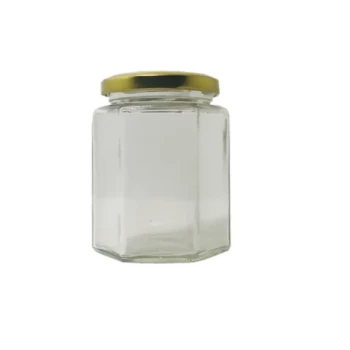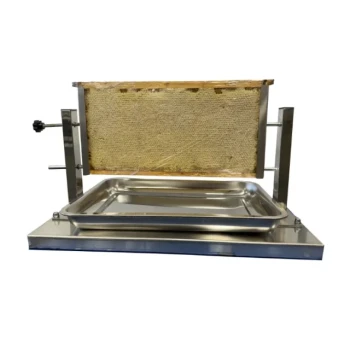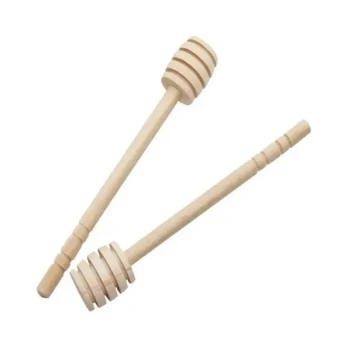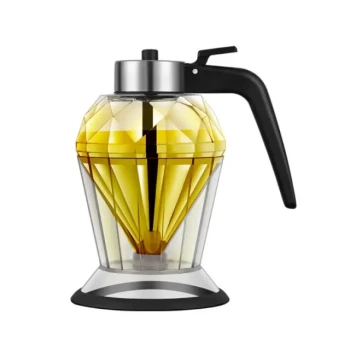At its core, the difference lies in human intervention. Raw honey is typically cloudy and crystallizes faster because it retains natural particles like pollen, while processed honey is filtered and heated to become clear and smooth with a longer, more stable shelf life.
The clarity and extended shelf life of processed honey are achieved by removing the very components—pollen, enzymes, and antioxidants—that give raw honey its unique texture, flavor profile, and potential health benefits. The choice between them is a trade-off between stability and natural integrity.
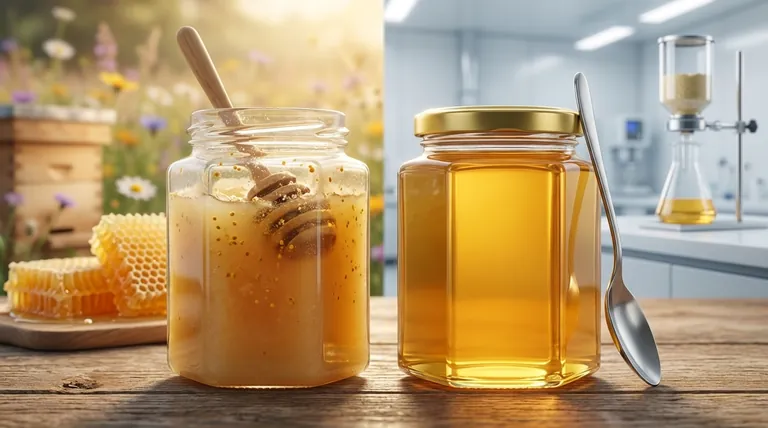
The Visual Difference: Clarity vs. Cloudiness
The appearance of honey is the most immediate indicator of its processing level. This visual distinction is a direct result of what is left in, or taken out of, the final product.
Why Raw Honey Appears Cloudy
Raw honey is honey as it exists in the beehive, often strained only to remove large debris like beeswax and dead bees.
It retains fine, suspended particles, including pollen grains, propolis, and tiny bits of honeycomb. These natural components cause the honey to look opaque, cloudy, or milky.
Why Processed Honey is Clear
Processed honey is designed for a uniform appearance and long-term stability on a store shelf.
To achieve this crystal-clear look, manufacturers use ultra-filtration to strip out all fine particles, including the pollen. This results in a visually consistent product that many consumers have come to expect.
Shelf Life and Crystallization Explained
While honey is famous for its longevity, "shelf life" in a commercial sense often refers to how long it maintains its original liquid state and texture.
The Myth of "Spoiling"
Properly stored honey does not spoil like other foods. However, its texture can change over time.
Raw honey contains natural yeasts that, with sufficient moisture, can lead to fermentation. More commonly, it undergoes crystallization, a process often mistaken for spoilage.
Why Raw Honey Crystallizes Faster
Crystallization is a natural process where glucose separates from water in the honey. The tiny particles of pollen and propolis in raw honey act as starting points, or nuclei, for crystals to form around.
This makes raw honey crystallize more quickly. This is a sign of authenticity, not of the honey going bad. The texture can easily be restored by gently warming the jar in water.
How Processing Extends Shelf Stability
Processed honey undergoes two key steps to prevent these changes.
First, pasteurization (heating) destroys the yeast cells, preventing any risk of fermentation. Second, the fine filtration that removes pollen also removes the nuclei needed for crystallization, keeping the honey liquid for much longer.
Understanding the Trade-offs: What's Lost in Processing
The methods used to make honey clear and stable come at a cost, fundamentally altering the product from its natural state.
The Impact on Nutritional Value
The heat from pasteurization can degrade or destroy delicate, beneficial compounds.
This includes natural enzymes and antioxidants, which are valued for their potential health-promoting properties. Raw honey preserves these components in their original state.
Diminished Antibacterial Properties
Raw honey is known for its natural antibacterial qualities, partly due to an enzyme called glucose oxidase, which bees add.
This enzyme can be damaged by the heat of pasteurization, potentially reducing the antibacterial potency found in processed honey.
The Loss of Flavor and Identity
Pollen grains in honey are unique to the floral sources the bees visited. They contribute to a honey's distinctive flavor, texture, and aroma.
By filtering out the pollen, the process removes the very essence of the honey's origin, resulting in a more generic, uniform sweetness.
Making the Right Choice for Your Goal
Your decision should be guided by what you value most in a honey product.
- If your primary focus is a long shelf life and a consistent, clear liquid: Processed honey is engineered specifically to meet these needs for aesthetic appeal and stability.
- If your primary focus is complex flavor and potential health benefits: Raw honey is the clear choice, as it retains the natural enzymes, pollen, and antioxidants from the hive.
- If you are concerned about crystallization: Remember that this is a natural and reversible sign of authentic, raw honey, not an indication of spoilage.
Ultimately, choosing between raw and processed honey is a choice between a product optimized for industrial consistency and one left in its natural, unadulterated state.
Summary Table:
| Feature | Raw Honey | Processed Honey |
|---|---|---|
| Appearance | Cloudy, opaque | Clear, smooth |
| Shelf Life (Texture) | Crystallizes faster | Remains liquid longer |
| Processing | Minimally filtered, unpasteurized | Ultra-filtered and pasteurized |
| Key Components | Retains pollen, enzymes, antioxidants | Pollen and enzymes removed |
Equip your apiary for premium honey production with HONESTBEE.
As a trusted wholesale supplier for commercial apiaries and distributors, we provide the high-quality beekeeping supplies and equipment you need to efficiently produce superior raw or processed honey. Our products help you maintain hive health and optimize your harvest, ensuring the integrity of your final product.
Contact our experts today to discuss your specific needs and how our wholesale solutions can support your business's growth and success.
Visual Guide
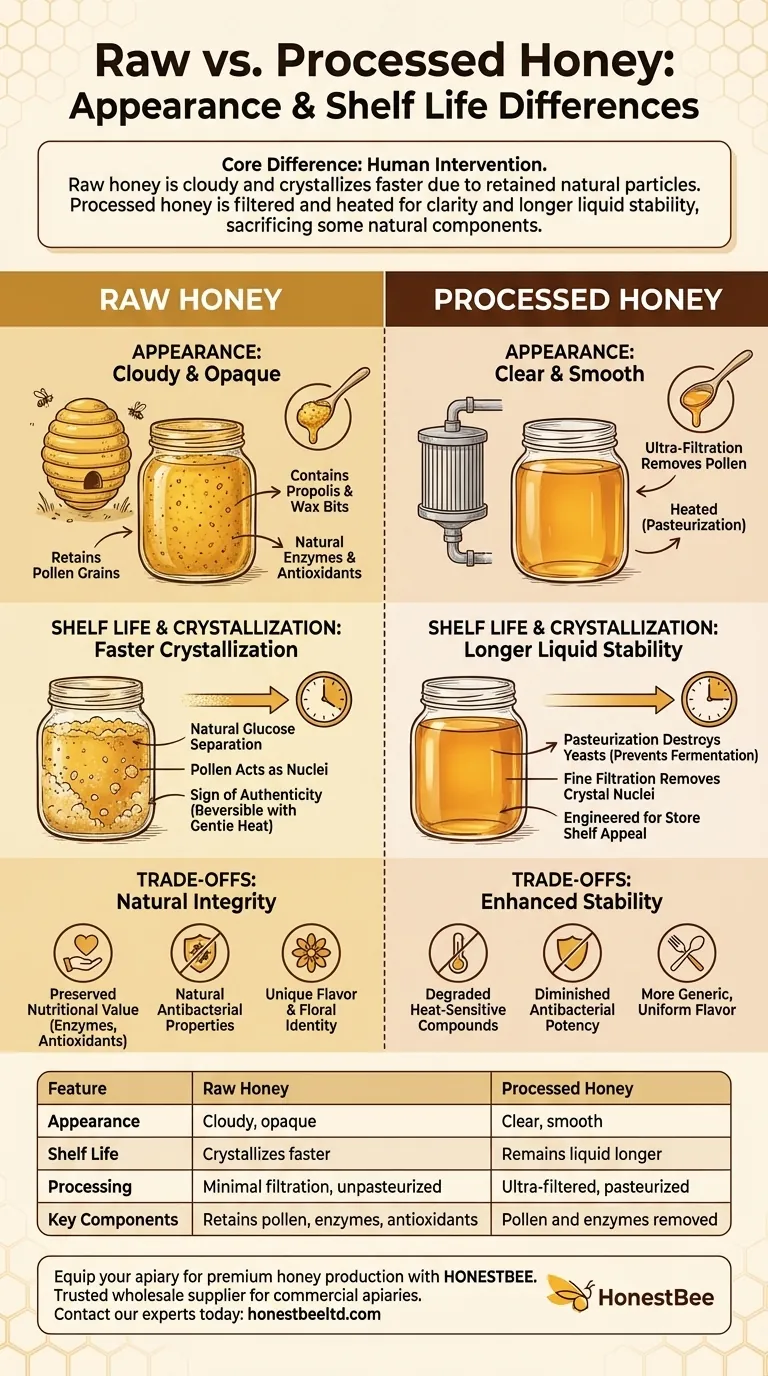
Related Products
- Hexagonal Glass Honey Jars with Metal Lug Caps Elegant Versatile Packaging
- Inverted Squeezable Honey Jar with No Drip Flip Top Cap for Easy Pouring
- Classic Honey Bear Jars with Flip Top Dispensing Cap for Liquid Sweeteners
- Stainless Steel Honey Tank Stand for Honey Storage
- Honey Gate Valve with Ergonomic Ball Handle Plastic Bee Honey Tap for Beekeeping Bottling and Honey Extractor Equipment
People Also Ask
- What makes raw honey more aesthetically appealing than processed honey? Discover the Beauty of Authenticity
- How should honey be stored and packaged? Preserve Flavor & Quality with Proper Containers
- What is done with the honey after extraction and filtering? From Purification to Perfect Packaging
- What factors should be considered when choosing honey packaging? Optimize for Brand, Operations & Market
- What are the common types of honey packaging? A Guide to Glass, Plastic, Pouches & Tins
